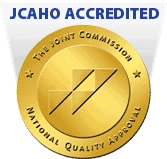Why is Meth Dangerous?

Methamphetamine, commonly known as meth, chalk, crank, crystal, or ice, is a central nervous system stimulant that is chemically similar to amphetamines. Unlike amphetamines, however, meth use is almost entirely recreational. An estimated 1.2 million Americans used meth in 2015.
Meth is manufactured mainly in Mexico, and the United States, in large or small illicit labs. The drug can be easily made with common over-the-counter ingredients, including cold medicines containing pseudoephedrine, as well as acetone, anhydrous ammonia, red phosphorous, and lithium. Meth is made in pill form, as a powder, or as a hard substance that resembles glass fragments or rocks. Meth is typically swallowed, snorted, smoked, or injected.
Meth is highly addictive. The drug has a short-acting high; the initial “rush” lasts only about five minutes in many users, followed by the “shoulder,” in which the euphoria decreases over an hour or so. Since the effects of meth fade quickly, users often binge on the drug over a period of days, known as a “run.” During this time, users sleep or eat but little. Following a binge, users generally experience “tweaking,” characterized by extreme irritability, paranoia, anxiety, and delusions. Tweaking may last from about 4 to 24 hours, followed by a “crash” that lasts for days, causing depression, extreme fatigue, and intense cravings for more meth.
A meth high is characterized by euphoria, racing thoughts, a flood of ideas, extreme energy, hyper-attention to details, and sexual stimulation. Many unpleasant side effects also occur, including jaw clenching, intense itching and skin sores from scratching, violent behavior, anxiety, confusion, respiratory problems, vomiting, diarrhea, headache, and convulsions. Meth abuse also causes extreme tooth decay, known as “meth mouth.”
As a neurotoxin, the drug kills brain cells and leads to lasting brain damage. Meth use is also associated with a high risk for the nerve disorder Parkinson’s disease, hepatitis B and C, and HIV/AIDS.
Intensive behavioral therapy is considered the most effective treatment for meth addiction, along with 12-step support groups. There is currently no medication available to specifically treat meth addiction, though research is ongoing.
If you or someone you love is abusing meth, seek help immediately. Addiction is a progressive, incurable, and fatal disease, if left untreated. To fully recover in mind, body, and spirit requires professional guidance. You have work to do. At Harmony Place, you never have to do the work alone. We believe in your right of self-determination. We’re meeting where you are and taking you where you want to go. For information on our total continuum of care and luxury residential treatment, and a private consultation, call us today: 1-855-652-9048






